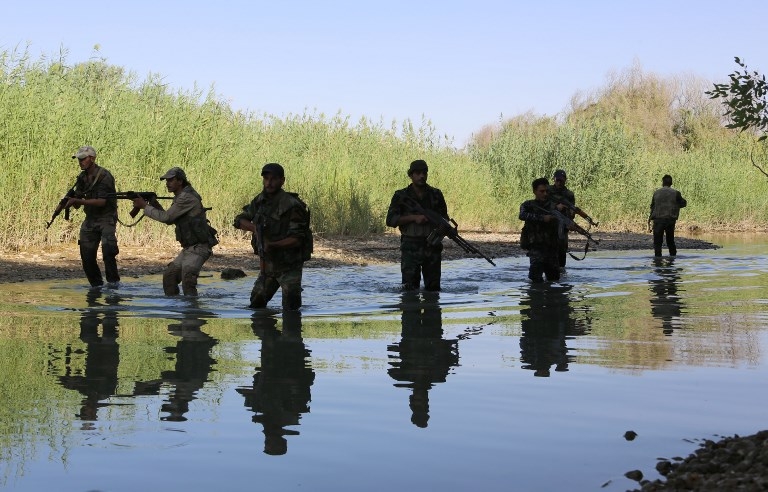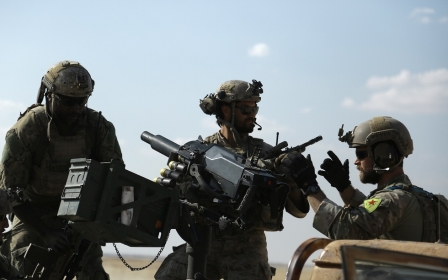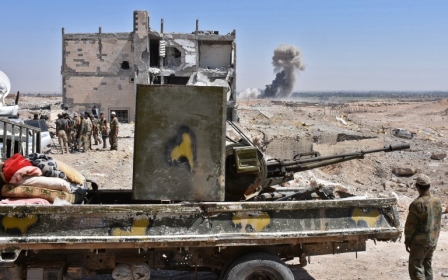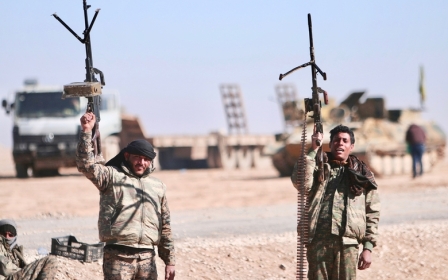US-backed SDF forces say they regain villages seized by Syrian army

US-backed Syrian Democratic Forces (SDF) said they expelled Syrian troops who briefly took control of a string of villages in oil-rich areas east of the Euphrates River near the Iraqi border on Sunday.
SDF forces led by the Kurdish YPG militia said they launched a counter-attack against Syrian troops backed by Russian forces, adding they were driven "far away" from four villages they had seized earlier in the day.
"Our forces regained the initiative," they said in a statement.
It did not say if the US coalition took part in the operation. Washington has a strong military presence in the area in eastern Syria that holds the bulk of the country's oil and gas reserves, according to regional diplomatic sources.
A US Army statement sent to Reuters confirmed the attack on SDF forces by what it called pro-government forces near Deir Ezzor city and said the "coalition used established deconfliction channels to de-escalate the situation," without elaborating.
"The coalition remains committed to our SDF partners in the campaign to defeat Daesh (Islamic State) in eastern Syria," the statement added.
A Western diplomatic source earlier told Reuters US coalition jets from bases in northern Syria hit the attacking forces that were believed to include Iranian-backed militias operating in Deir Ezzor area.
A source in the SDF also confirmed coalition forces had intervened.
Earlier, the Syrian army said it had captured a string of villages east of the Euphrates near the border with Iraq held by Kurdish-led forces, state television said. It gave no explanation for the move.
The US-backed proxy forces spearheaded by the YPG since last year control much of the territory east of the Euphrates in Deir Ezzor province as part of a major aerial and ground campaign led by the Pentagon that drove Islamic State group (IS) militants from eastern Syria and their former de facto capital Raqqa.
The Russian-backed Syrian army has rarely clashed with SDF forces in its campaign against IS and had kept away from their areas east of the Euphrates, focusing on regaining territory from the militants west of the river.
There have been elaborate "deconfliction lines" separating the coalition forces on the eastern side of the river from the Russian- and Iranian-backed forces on the western side to prevent clashes, US Army officials and defence analysts say.
In February, US air strikes killed and wounded hundreds of pro-government forces including Russian paramilitary contractors advancing near the eastern city of Deir Ezzor towards one of the largest gas fields in the hands of US-backed forces.
Before the announcement that the Syrian army had taken control of the villages, the SDF said they were engaged in heavy clashes with Syrian army troops on the outskirts of the village of Janin near the Euphrates.
They accused Syrian authorities of seeking to disrupt preparations by the US-led coalition to resume an imminent offensive against IS in several pockets of territory along the middle Euphrates River Valley that they still control.
US Defence Secretary Jim Mattis said on Thursday he expected a "re-energised" effort against IS militants in eastern Syria in the coming days.
US officials have said that in recent days they have seen SDF fighters returning to the area of the Euphrates where the militants operate to relaunch new operations against them.
The Kurdish-led militia has blamed a Turkish offensive against it in Afrin for diverting efforts away from the fight against IS.
New MEE newsletter: Jerusalem Dispatch
Sign up to get the latest insights and analysis on Israel-Palestine, alongside Turkey Unpacked and other MEE newsletters
Middle East Eye delivers independent and unrivalled coverage and analysis of the Middle East, North Africa and beyond. To learn more about republishing this content and the associated fees, please fill out this form. More about MEE can be found here.




